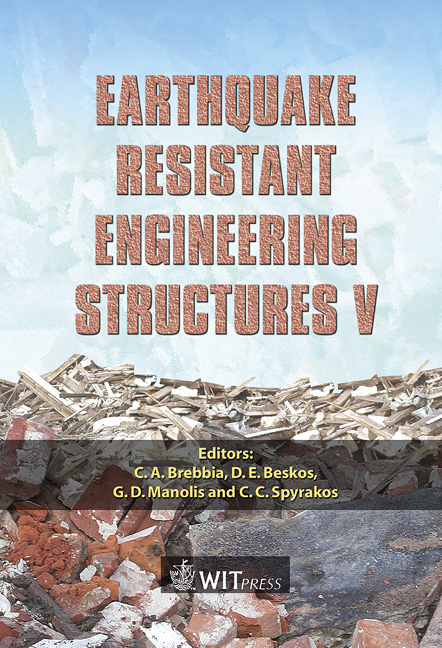An Aseismic Design Method For Preventing Damage Of A Soil-pile Foundation-super Structure System
Price
Free (open access)
Transaction
Volume
81
Pages
10
Published
2005
Size
2,752 kb
Paper DOI
10.2495/ERES050131
Copyright
WIT Press
Author(s)
K. Fuchida & T. Akiyoshi
Abstract
An effective aseismic design method for the conditions of ground improvement is proposed for preventing liquefaction of ground and reducing damage of pile foundations. The proposed method uses two existing computer programs; NUW2 for 2D effective stress analysis and WAP3 for simulation of the sand compaction pile method. The analysis is extended to take the soil-pile interaction into consideration. Numerical computations for responses of the ground and the pile foundations are performed for the 22 ground models in the Kobe area. By using the natural period of the ground as the key parameter, the critical conditions of ground improvement are evaluated and related with the responses of pile and superstructure on the ground. The main conclusion is that the proposed method is effective for reducing pile stress under an allowable limit by ground improvement in sandy layers, but the ground improvement is difficult to prevent pile failure in soft clayey ones. Keywords: effective stress analysis, liquefaction, pile, ground improvement, interaction, aseismic design. 1 Introduction Many damages of foundation structures and tilt of structures occurred at reclaimed land during 1995 Hyogo-ken-nanbu Earthquake (AIJ [1]). The characteristics of surface ground layers by strong ground motion and liquefaction causes the damages of pile foundation. There are many countermeasures against
Keywords
effective stress analysis, liquefaction, pile, ground improvement, interaction, aseismic design.





